Reference frames and notations
Notations
The Norwegian Subsea MRU outputs values (position and velocity) for all 6 degrees of freedom (DOFs):
The 3 translational DOFs are surge, sway and heave.
The 3 rotational DOFs are roll, pitch and yaw.
Degrees of freedom | |||
|---|---|---|---|
No. | DOF | Linear and angular velocities | Positions and Euler angles |
1 | Surge | ||
2 | Sway | ||
3 | Heave | ||
4 | Roll |
| |
5 | Pitch | ||
6 | Yaw | ||
Organized into vectors, these are
where is the linear position,
is the linear velocity,
is the angular position, also referred to as attitude in Euler angles.
is the angular velocity, also called the turn rate vector or rotational velocity.
Reference frames
The motion measured by the MRU can be represented in different reference frames. The 3 most important frames are:
NED, {
}: The North, East, Down frame with axes {
}
,
BODY, {
}: The body frame with axes {
}
,
MRU, {
}: The MRU frame with axes {
}
.
The NED (North, East, Down) frame is seen in the figure below. This is a local tangential frame fixed to the Earth's surface.
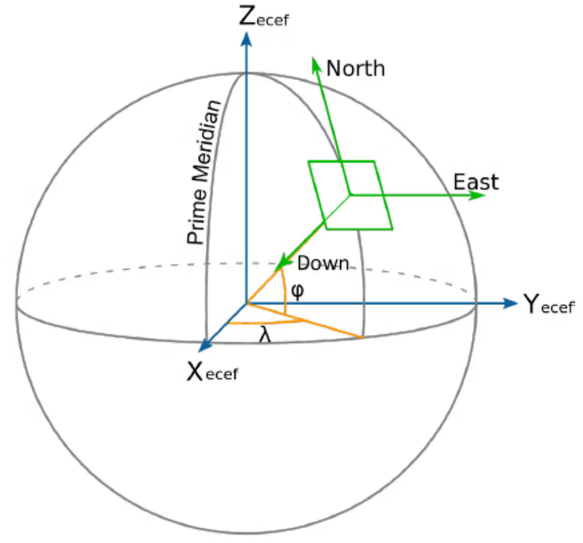
The MRU frame is the reference frame fixed to the MRU as seen in the figure below. All accelerometer and gyro raw measurements are performed in this frame.

The vessel's BODY frame is the frame fixed to the vessel as seen in the figure below, which also shows the NED and MRU frames.
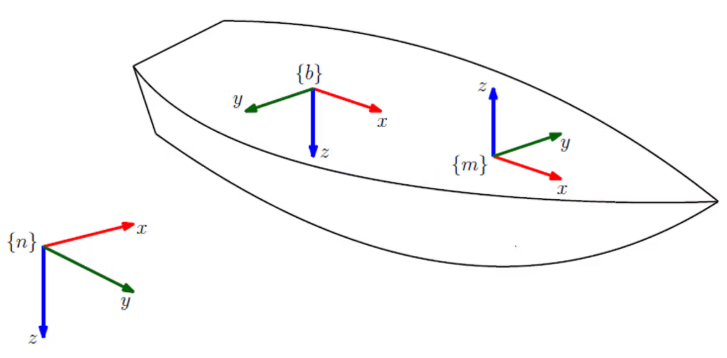
The MRU and Body frame rotate together as the MRU is mounted to the vessel. The attitude of the MRU with respect to the NED frame is measured by the MRU. The BODY frame of a vessel is a right hand coordinate system, with x-axis pointing forward and y-axis pointing to starboard. The MRU can output roll, pitch, yaw, surge, sway and heave motion measurements. The positive directions for these degrees of freedom are shown in the figure below.

An example of an MRU mounted on a ship is shown in the figure below. The MRU is displayed with its reference frame, and the origin of the vessel’s BODY frame is located at the aft of the ship.
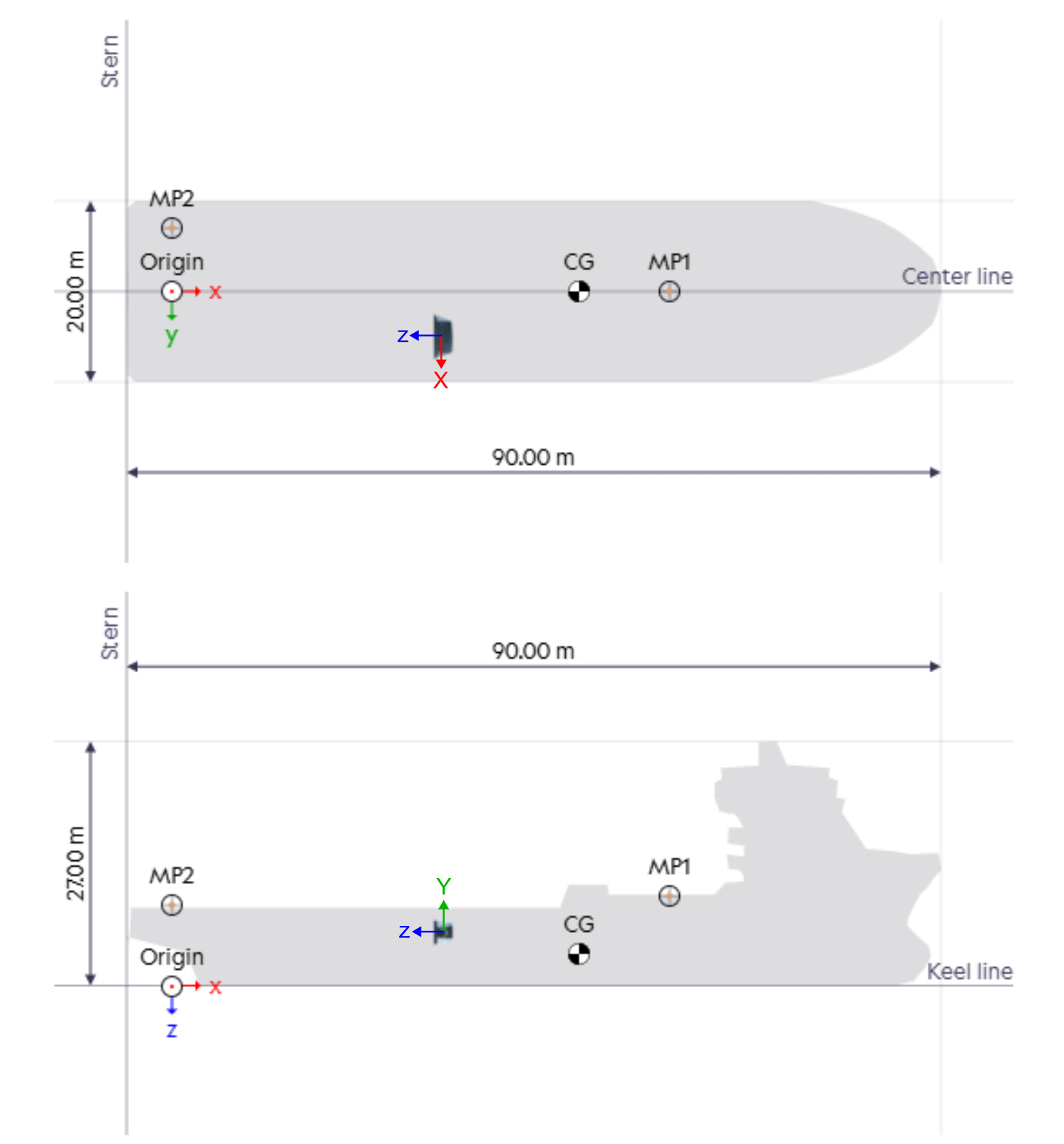
Rotation matrix and Euler angles
The rotation matrix from BODY to NED is and is calculated as
where
are the rotation matrices from roll, pitch and yaw, respectively. and
are short for cosine and sine.
ZYX convention
Note that the order in which these three principal rotations are carried out is not arbitrary. We use the ZYX convention, which is common in guidance, navigation, and control applications.
Practical examples
Roll and pitch reference frames
Roll and pitch are available in the MRU to NED and the BODY to NED frame. You can choose which frame when you define a custom protocol, see section below from the MRU configurator.
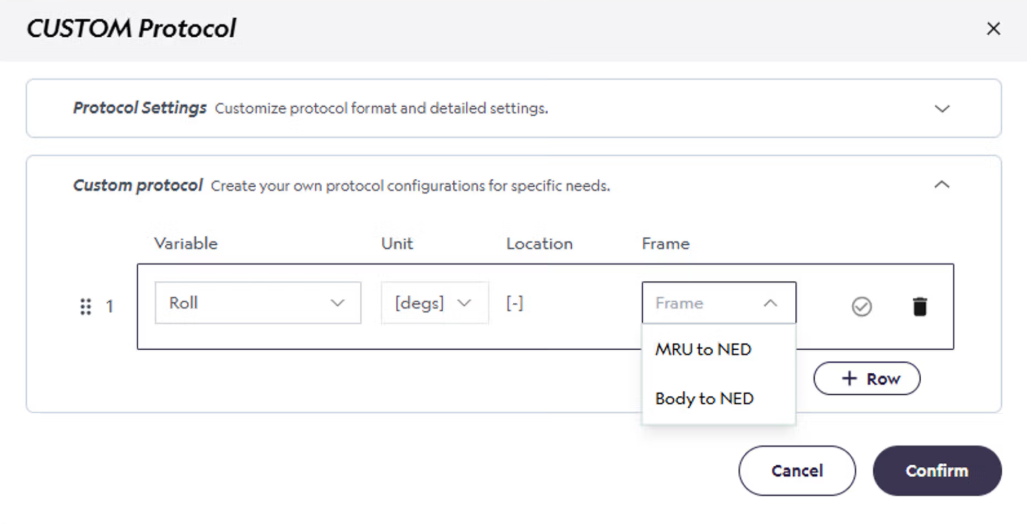
Heave, surge and sway reference frames
Heave, surge and sway are available in the MRU, BODY, NED and heading frames. You can choose which frame when you define a custom protocol, see section below from the MRU configurator.
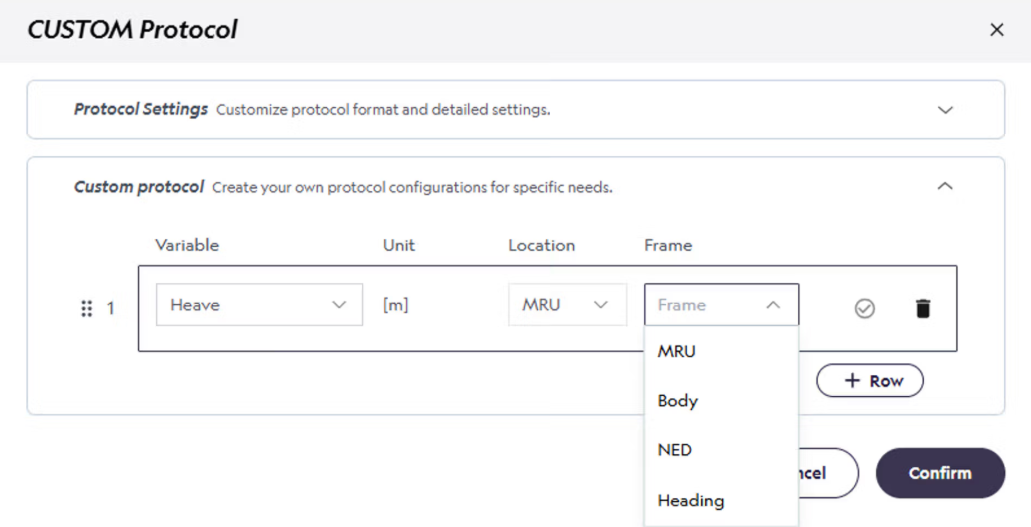
MRU mounting - MRU vs body frame
Use the MRU orientation settings in the MRU configurator to define the orientation of the MRU with respect to the vessel's axes. Note that you:
1. First define the main rotation angle of the MRU. In this case the MRU is mounted vertically with X-axis down and Y-axis to Port.
2. Secondly, you define the offset from the main rotation angle. This can be 0 if the MRU is perfectly vertical and aligned with the ships axes.
The resulting total mounting angles are: Roll = 0, pitch = -90 degrees and yaw = 180 degrees.
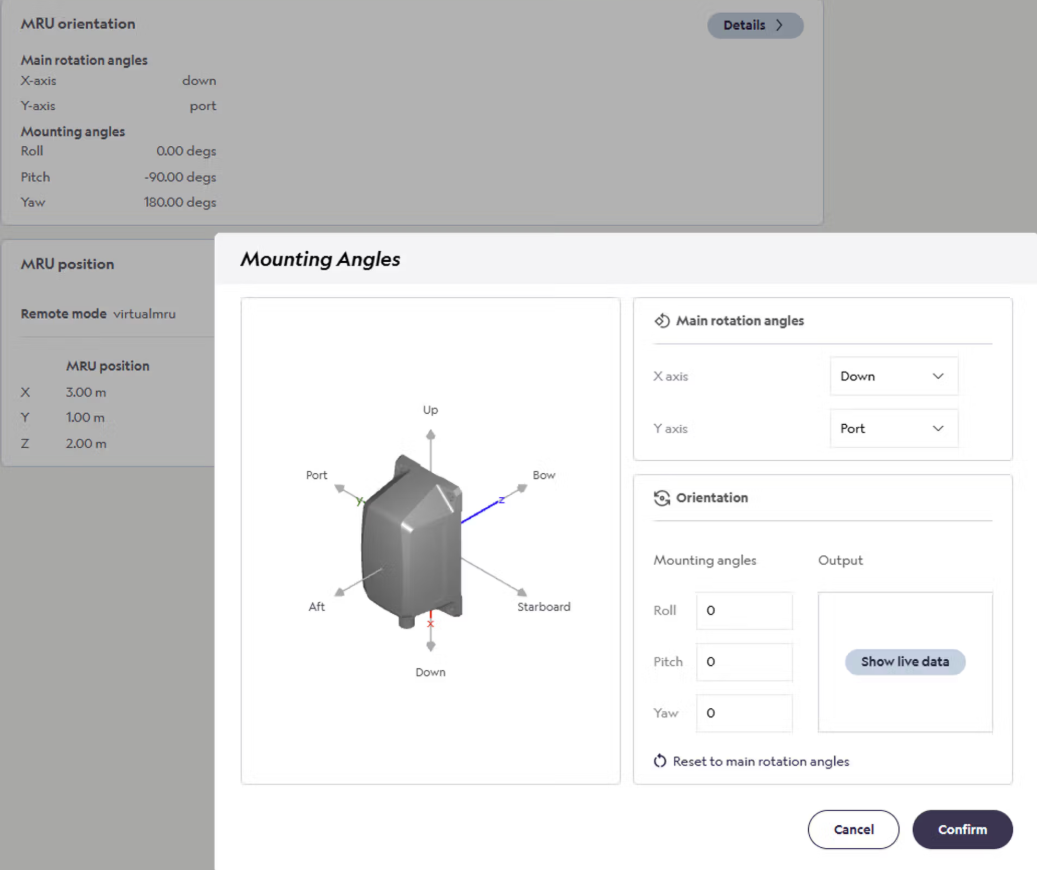
For detailed instructions on how to mount and align your MRU in the MRU configurator, see here.
